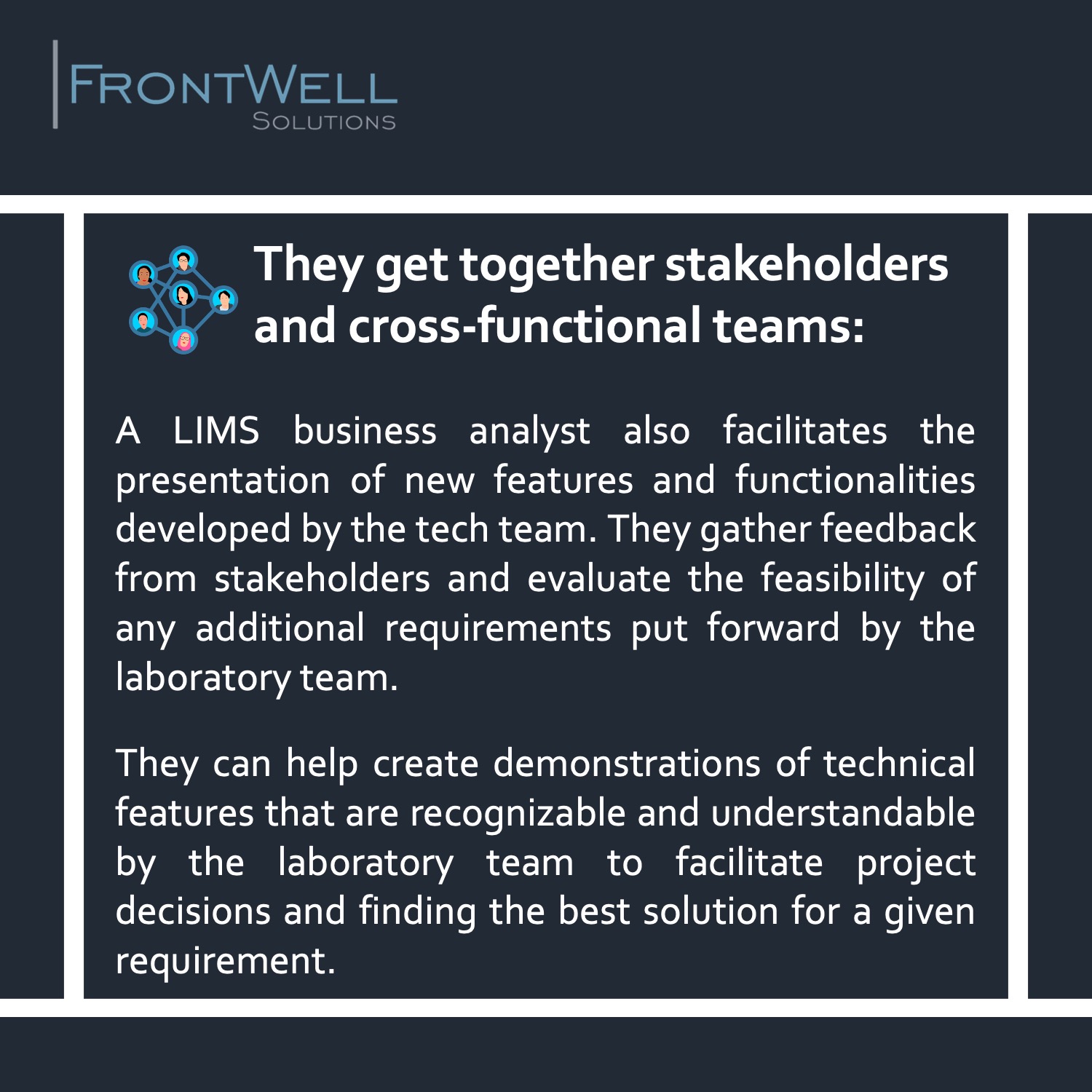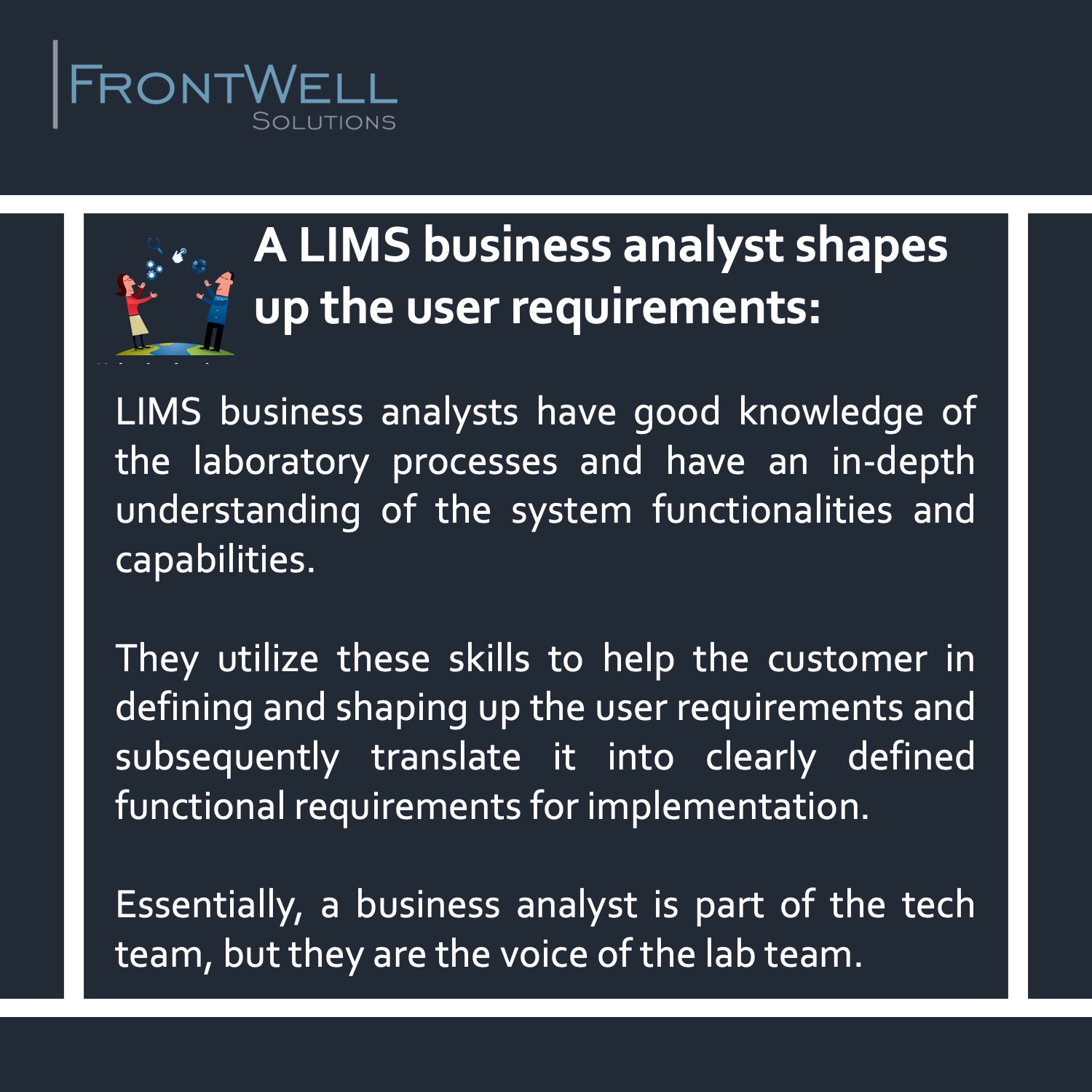A Laboratory Information Management System (LIMS) Business Analyst plays a crucial role in bridging the gap between laboratory operations and information technology. Their primary focus is to understand the unique needs of a laboratory environment and translate those requirements into technical solutions within the context of a LIMS implementation or upgrade. Here's an overview of their role and responsibilities:
1. Requirement Gathering: The LIMS Business Analyst works closely with laboratory personnel, scientists, managers, and other stakeholders to gather detailed requirements. This involves understanding the lab's processes, workflows, data management needs, regulatory compliance requirements, and any challenges they face.
2. Documentation: They document the gathered requirements in a clear and structured manner. This documentation serves as a foundation for the development and configuration of the LIMS system.
3. Process Mapping: The analyst maps out existing laboratory processes and workflows to identify areas for improvement, automation, and integration. They work to streamline processes and align them with LIMS capabilities.
4. Solution Design: Based on the gathered requirements and process analysis, the analyst collaborates with technical teams to design a customized LIMS solution. This may involve configuring existing LIMS modules, integrating with other systems, or even suggesting system enhancements.
5. Communication: Effective communication is key. The LIMS Business Analyst acts as a mediator between laboratory staff and technical teams. They ensure that technical jargon is translated into understandable terms for both sides, facilitating a smooth collaboration.
6. Testing and Validation: They participate in testing the LIMS system to ensure that it aligns with the documented requirements. This includes functional, performance, and user acceptance testing. They also contribute to the validation process to ensure compliance with regulatory standards.
7. Training and User Support: The analyst helps in creating training materials and may conduct training sessions for laboratory personnel on how to use the LIMS effectively. They also provide ongoing user support, addressing any issues or questions that arise after implementation.
8. Continuous Improvement: Post-implementation, the LIMS Business Analyst remains engaged with the laboratory to monitor system performance and gather feedback. They identify areas for further optimization and enhancements, ensuring that the LIMS system continues to meet evolving needs.
9. Regulatory Compliance: Depending on the industry, laboratories often need to adhere to strict regulatory standards. The analyst ensures that the LIMS solution meets these compliance requirements, facilitating audits and inspections.
10. Project Management: In larger LIMS projects, the analyst might take on project management responsibilities, coordinating timelines, tasks, and resources to ensure the successful implementation of the LIMS system.
A LIMS Business Analyst serves as a liaison between laboratory personnel and IT teams, ensuring that the technical solution aligns with the unique needs of the laboratory environment. Their role involves understanding, translating, designing, implementing, and supporting LIMS solutions that enhance laboratory processes, data management, and overall efficiency.





The Journey of Lab Digitalization and the Role of a LIMS Business Analyst